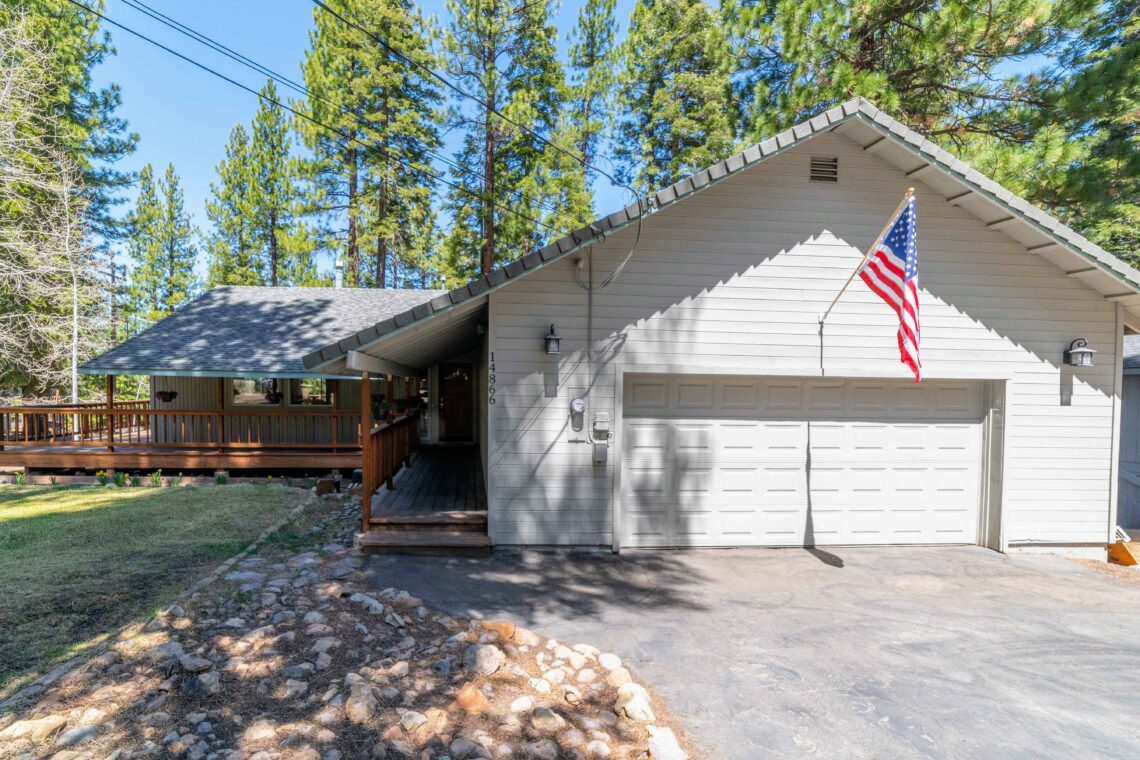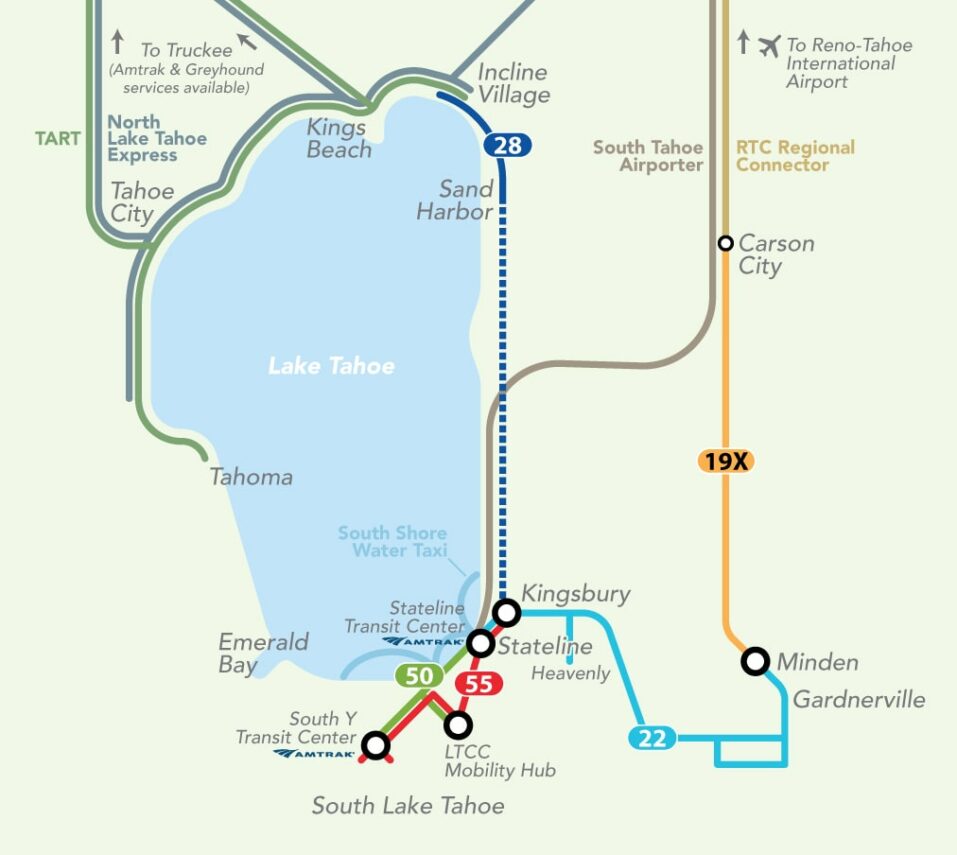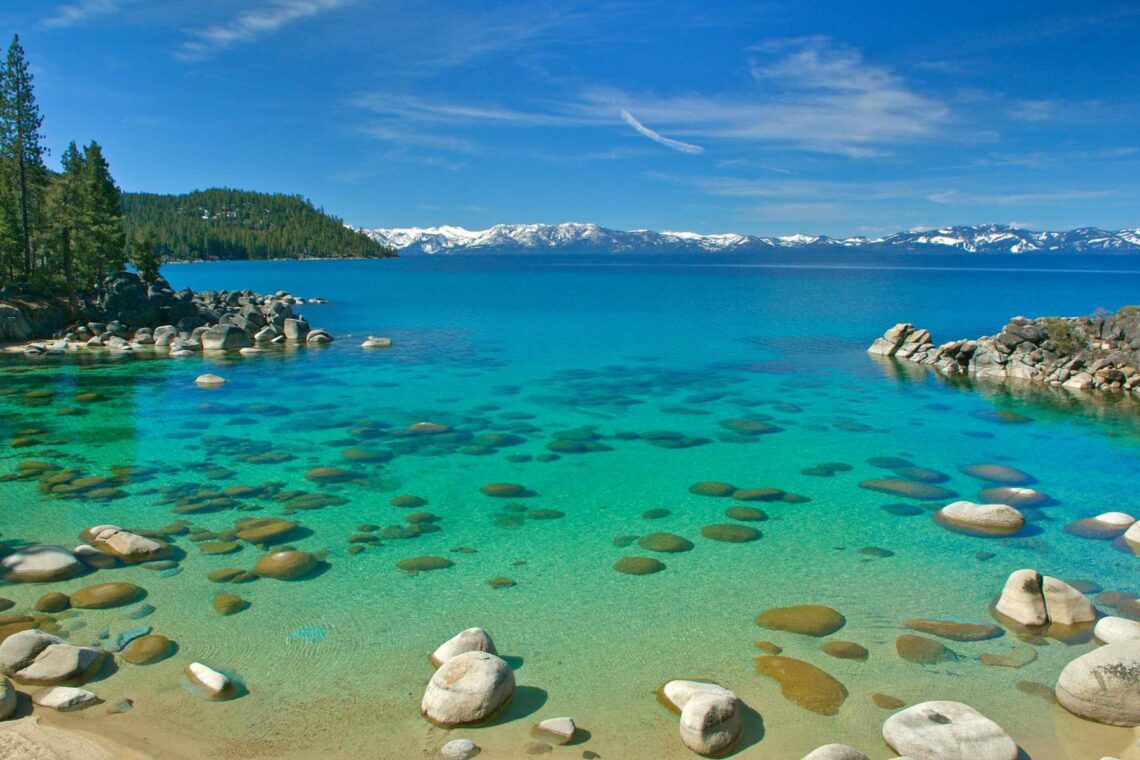Have you ever wondered why people always talk about the cost of living when they discuss moving to a new place? It’s more than just looking at prices; it’s about knowing what you can actually afford with your hard-earned money in different locations. The cost of living includes everything from housing costs, transportation expenses, and grocery prices to healthcare and entertainment costs. It helps you figure out how expensive or affordable life will be in a new city.
As someone who has worked as a real estate agent in Lake Tahoe for many years, I’ve personally seen how the cost of living affects both home buyers and sellers. Whether it’s the desire to own a house with a view of the mountains or the need to find an affordable place to rent, people’s financial situations often determine what they can achieve.
Just imagine waking up every morning to breathtaking views of a beautiful lake, spending your weekends skiing down snowy slopes, or taking peaceful walks in the midst of nature. It sounds like a dream come true, doesn’t it? But here’s the big question: How does the cost of living in Lake Tahoe compare to other places? Can you actually afford to live in Lake Tahoe?
We’ll explore this topic in detail and find out if Lake Tahoe could be your next perfect home.
The Unique Charms and Challenges of Living in Lake Tahoe
Living in Lake Tahoe is like stepping into a postcard. The breathtaking landscapes, crystal-clear waters, and snow-capped mountains create a stunning backdrop for daily life. Outdoor enthusiasts have a wide range of activities to choose from all year round:
- Winter: Enjoy world-class skiing and snowboarding at renowned resorts.
- Summer: Engage in boating, hiking, and mountain biking adventures.
The Charm of Community
One of the greatest attractions of living in Lake Tahoe is the sense of community. Imagine having friendly neighbors who share your passion for the outdoors, endless blue skies, and the peace that comes with being close to nature.
The Challenge of Affordability
However, as with any desirable destination, Lake Tahoe presents its own challenges. One major obstacle for many prospective residents is the high cost of housing. As more people discover this hidden gem, prices for homes and rentals have skyrocketed. This surge in demand has made it increasingly difficult to find affordable housing options.
To give you an idea:
- Median Home Price: $900,000+
- Average Rent for a 2-Bedroom Apartment: $2,500 per month
It requires careful financial planning to strike a balance between the dream of living in such a picturesque location and the reality of these expenses.
Here’s a market summary of the rental rate in South Lake Tahoe.
Understanding the Cost of Living Index and Its Implications for Lake Tahoe
Let’s explore why Lake Tahoe’s cost of living index is important for those considering moving to this beautiful location. The cost of living index is a way to compare how expensive it is to live in one place compared to another. It takes into account different factors such as housing, transportation, healthcare, and more.
Housing Costs
One of the main factors that greatly affects the cost of living in Lake Tahoe is housing expenses. If you’re thinking about moving here, be prepared for higher prices.
Rising Prices
Housing costs in Lake Tahoe have been increasing consistently. Recent data shows that the median home price has gone up over the years and now averages around $800,000. Renting apartments is also not cheap, with prices going up steadily due to high demand and limited availability.
These numbers can vary depending on whether you’re looking at North or South Lake Tahoe and how close you are to the lake itself.
- Median Home Price:~$800,000
- Average Rent for 2-Bedroom Apartment:~$2,500/month

Renting vs. Buying
Choosing between renting and buying a home in Lake Tahoe is not an easy decision and depends on your financial situation and long-term plans.
Pros of Renting:
- Flexibility:Easier to move if needed.
- Less Initial Investment:No need for a down payment.
- Maintenance-Free:Landlord usually takes care of repairs.
Cons of Renting:
- No Equity Build-Up:Your monthly rent payments don’t go towards owning a property.
- Limited Customization:Restrictions on making changes or upgrades.
Pros of Buying:
- Equity Building:Each mortgage payment helps you build ownership in your home.
- Stability:Fixed mortgage payments provide long-term financial stability.
- Personalization:Freedom to customize and make your home unique.
Cons of Buying:
- High Upfront Costs:Need to pay for a down payment and closing costs, which can be significant.
- Maintenance Responsibility: You are responsible for all repairs and upkeep.
- Market Risk: Property values can go up or down, affecting your investment.
Both renting and buying have their own advantages and disadvantages due to the competitive market conditions. Rentals are in high demand and often require quick decisions as properties get rented out quickly. On the other hand, buying a home can involve bidding wars that drive prices even higher.
Understanding these differences will help you make better choices about whether renting or buying in Lake Tahoe is more suitable for your lifestyle and financial goals.
Transportation Expenses
Getting around in Lake Tahoe can be a unique experience, but let’s crunch some numbers to understand what you’re dealing with.
Fuel Prices and Vehicle Maintenance Costs
- Fuel: With fluctuating gas prices, it’s essential to keep an eye on the cost of filling up. As of now, fuel prices in Lake Tahoe tend to hover above the national average due to its remote location.
- Maintenance: The mountainous terrain can be tough on vehicles, so anticipate higher-than-average maintenance costs. Think frequent tire changes and regular brake checks.
Public Transportation Options
Lake Tahoe isn’t exactly known for its robust public transit system. However, there are some options:
- Tahoe Transportation District (TTD): Offers local bus services, which can be a budget-friendly alternative to owning a car. But remember, these services are limited and may not cover all areas you need to access.
- Seasonal Shuttles: During peak tourist seasons, special shuttles operate between major attractions and ski resorts. These can save you some cash if you plan your commute accordingly.

Alternative Modes of Transportation
Looking to save even more? Consider these options:
- Biking: With numerous bike trails around the lake, cycling is a viable option for short commutes and recreational trips.
- Carpooling: Websites and local community boards often have carpooling arrangements that can help share the burden of fuel costs and reduce wear-and-tear on your vehicle.
Assessing transportation costs along with housing will give you a clearer picture of the overall cost of living in Lake Tahoe.
Other Key Factors Influencing the Cost of Living in Lake Tahoe
Understanding the Cost of Living Index
The cost of living index is crucial. This index measures the relative cost associated with maintaining a certain standard of living in different locations. It takes into account various factors like housing, transportation, groceries, and healthcare. Lake Tahoe’s cost of living index tends to be above the national average, making it a pricier place to call home.
Healthcare Costs
Medical expenses are a significant component of this equation. Insurance premiums in Lake Tahoe can vary widely based on coverage levels and providers. Out-of-pocket costs for medical services, including routine check-ups and emergency care, also add to the overall financial burden.
Hidden Costs and Seasonal Variations
A few unique factors can catch new residents off guard:
- Utility Bills: Heating costs can skyrocket during the chilly winter months, while cooling might not be as much of an issue.
- Special Assessments: Some communities have additional fees for amenities like private beach access or maintenance of recreational facilities.
These hidden costs contribute to the higher-than-average cost of living in Lake Tahoe but understanding them can help you plan better.
Navigating these elements effectively ensures that your dream of living in Lake Tahoe doesn’t turn into a financial strain.
Comparing Lake Tahoe’s Cost of Living to Other Desirable Cities
Curious about how Lake Tahoe stacks up against other hotspots? Let’s dive into a cost of living comparison that highlights the differences and similarities between Lake Tahoe and a few other outdoor lover’s paradises.
Boulder, Colorado
Boulder is another gem for those who can’t get enough of the outdoors. Housing in Boulder is similarly pricey, with median home prices nearing $1 million. Rental costs are also high, averaging around $2,000 per month for a one-bedroom apartment. While both locations boast stunning natural beauty and recreational activities, Boulder has a slightly higher cost of groceries and healthcare compared to Lake Tahoe.
Asheville, North Carolina
Asheville offers a more budget-friendly alternative to Lake Tahoe. Here, the median home price sits around $350,000, and rentals average about $1,200 per month for a one-bedroom. Though housing is cheaper, residents might find fewer job opportunities in specialized fields compared to Lake Tahoe. The cost of dining out and entertainment is also lower in Asheville.
Bend, Oregon
Bend is often touted as the Pacific Northwest’s answer to Lake Tahoe. Home prices here hover around $600,000 with rentals averaging $1,500 per month for a one-bedroom unit. Transportation costs can be slightly higher due to less extensive public transportation options. However, Bend’s food scene and local amenities provide great value for money.
Jackson Hole, Wyoming
Jackson Hole shares many similarities with Lake Tahoe but comes with an even steeper price tag. Median home prices exceed $1 million easily. Rentals aren’t far behind either—expect to pay over $2,500 monthly for a modest apartment. On the flip side, Jackson Hole offers unparalleled access to national parks and winter sports.
By comparing these cities, it becomes clear that while Lake Tahoe is expensive, it offers unique advantages that might justify the cost for many people.
Career Opportunities and the Cost of Living in Lake Tahoe
Making a living in Lake Tahoe has its own unique challenges and rewards. The job market here is constantly changing, mainly driven by the area’s focus on tourism and outdoor activities. This means that industries like hotels, ski resorts, and recreational services are the main players in the local economy.
However, these jobs are often seasonal, which means that your income can vary throughout the year. For example, there may be more job openings at ski resorts during winter, while summer is all about hiking tours and water sports.
To overcome these challenges and find a balance between work opportunities and living expenses in Lake Tahoe, here are some strategies you can consider:
1. Explore Remote Work Options
With the increasing popularity of remote work, many residents are now able to live in Lake Tahoe while working for companies located elsewhere. This not only ensures a steady income but also allows you to enjoy the region’s lifestyle without sacrificing your career growth.
2. Be Open to Multiple Income Streams
Instead of relying solely on one job, many locals choose to have multiple sources of income to manage their finances effectively. This could involve combining seasonal positions with freelance gigs or part-time employment to create a more stable financial situation.
3. Tap Into the Local Entrepreneurial Scene
Lake Tahoe’s close-knit community and constant flow of tourists create an ideal environment for small businesses catering to visitors. If you have a passion or skill that aligns with the interests of tourists, starting your own venture such as guided tours or specialty shops can be both fulfilling and profitable.
Finding a balance between career opportunities and the cost of living may require thinking outside the box and being adaptable, but it also presents an opportunity to thrive while surrounded by Lake Tahoe’s stunning natural beauty.
Is the Lake Tahoe Lifestyle Within Reach?
Living in Lake Tahoe has a unique allure that captivates many. The breathtaking scenery, year-round recreational opportunities, and close-knit community make it an ideal place for those who cherish an outdoor lifestyle. The cost of living in Lake Tahoe, however, is higher than average.
When considering a move to Lake Tahoe, it’s essential to weigh your own priorities and financial situation:
- Personal Priorities: What aspects of life are non-negotiable for you? Is it the proximity to nature, the quality of schools, or perhaps the sense of community?
- Financial Situation: Assess your income, savings, and potential job opportunities in the area. Can you comfortably afford the housing costs and other living expenses?
As someone who’s helped numerous clients navigate these decisions, I can offer insights tailored to your unique circumstances. Whether you’re contemplating buying a home or thinking about renting, my expertise can help you identify opportunities and manage challenges effectively.
Feel free to reach out if you’re considering relocating to Lake Tahoe or comparing it with your city. Together, we can explore how to make this dream lifestyle a reality for you.


Leave a Reply